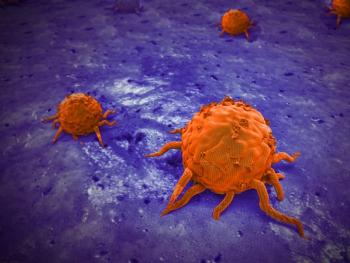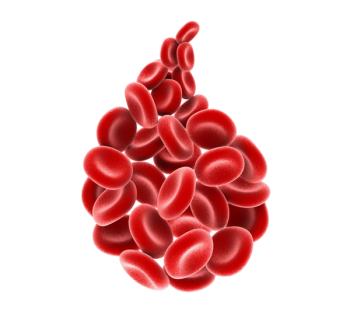
Low-Dose CT Screening for Lung Cancer Shows Large-Scale Efficacy
Study data show a small number of individuals with a lung cancer diagnosis within 12 months of a negative baseline screening result.
Large-scale lung cancer screening with low-dose CT demonstrated feasibility and efficacy across an ethnically and socioeconomically diverse population, according to findings from the SUMMIT trial (NCT03934866) published in Lancet Oncology.1
Of 12,773 individuals, 261 (2.0%) had a lung cancer diagnosis after a positive screening result, which included 163 (1.3%) with screen-detected disease and 98 (0.8%) with disease detected following delayed screening. Additionally, 276 (2.2%) had a diagnosis for any intrathoracic malignancy following a positive baseline screening result.
Low-dose CT screening demonstrated a sensitivity of 97.0% (95% CI, 95.0%-99.1%), specificity of 95.2% (95% CI, 94.8%-95.6%), and a false-positive rate of 4.8% (95% CI, 4.4%-5.2%) at 12 months. Of 618 individuals who received a referral to a multidisciplinary lung cancer team, 261 (42.2%) had a lung cancer diagnosis and 276 (44.7%) had any intrathoracic malignancy. The most common lung cancer diagnoses included stage IA (54.8%), IB (15.3%), and III disease (14.2%).
Patients typically received surgical resection (77.0%; n = 201) as their primary treatment modality, with 9.2% (n = 24) receiving stereotactic ablative radiotherapy (SABR) and 4.2% (n = 11) receiving radical radiotherapy alone or in combination with chemotherapy. Investigators reported surgery in 85.2% (n = 156 of 183), 70.8% (n = 17 of 24), and 75.7% (n = 28 of 37) of patients with stage I, II, and III disease, respectively. Of 189 patients who had available preoperative clinical staging, upstaging from stage I to stage II or III disease occurred in 12 patients.
“Low-dose CT with a nodule management protocol based on British Thoracic Society guidelines had high sensitivity at 12 months, with a relatively low false-positive rate. A very small number of participants were clinically diagnosed with lung cancer outside the study within 12 months of a negative baseline screen,” lead study author Amyn Bhamani, PhD, from Lungs for Living Research Centre, part of University College London Respiratory, at University College London in the United Kingdom, wrote with coauthors.1 “In conclusion, our findings show that large-scale lung cancer screening is both feasible and effective and provides a framework for successful delivery of a population-based national program.”
Investigators of this prospective, longitudinal cohort study assessed individuals aged 55 to 77 years recorded as current smokers in their primary care records at any point within 20 years across 329 primary care practices in London. Screening consisted of noncontrast, thin-collimation low-dose CT imaging at a target dose of 2 mSv. At 1 year after initial screening, individuals were randomly assigned 1:1 to undergo or forego a scan, with exceptions noted for those with baseline scans that reflected findings requiring clinically indicated imaging surveillance.
The study’s primary objective was to evaluate cancer incidence associated with screening test performance based on sensitivity, false positive rate, positive predictive value, and negative predictive value.2 Another primary objective was examining the performance of low-dose CT based on established measures, including patient characteristics, screen-detected cancers per 1000 screened, people who have a biopsy per 1000 screened, and malignant and benign tumors detected.
The median age of individuals who participated in the study was 65.0 years (IQR, 60.0-70.0), and most were male (57.6%) and White (83.5%). Additionally, most of the study population had 20 to 39 smoking pack-years (44.8%), completion of school at or before 15 years (39.7%), former smoking status (51.1%), and no airflow obstruction (43.4%).
Synchronous primary lung cancers were noted in 10.0% (n = 26 of 261) of patients, with 15 undergoing a single surgical procedure, 4 receiving 2 separate surgical resections, and 1 having resection plus subsequent SABR for the synchronous primary tumor. Overall, 213 surgical resections in 204 individuals confirmed a malignancy.
Across 14,886 low-dose CT scans, 2 individuals required repeat imaging due to poor image quality. Additionally, 6092 of 6242 (97.6%) individuals who were currently smoking received brief advice on smoking cessation during a lung health check appointment and 1933 (17.8%) gave consent for referral to a smoking cessation service.
References
- Bhamani A, Creamer A, Verghese P, et al. Low-dose CT for lung cancer screening in a high-risk population (SUMMIT): a prospective, longitudinal cohort study. Lancet Oncol. Published online March 25, 2025. doi:10.1016/S1470-2045(25)00082-8
- The SUMMIT study: a cancer screening study (SUMMIT). ClinicalTrials.gov. Updated December 5, 2024. Accessed April 24, 2025. https://tinyurl.com/2mmn6bv8
Newsletter
Stay up to date on recent advances in the multidisciplinary approach to cancer.



















































































